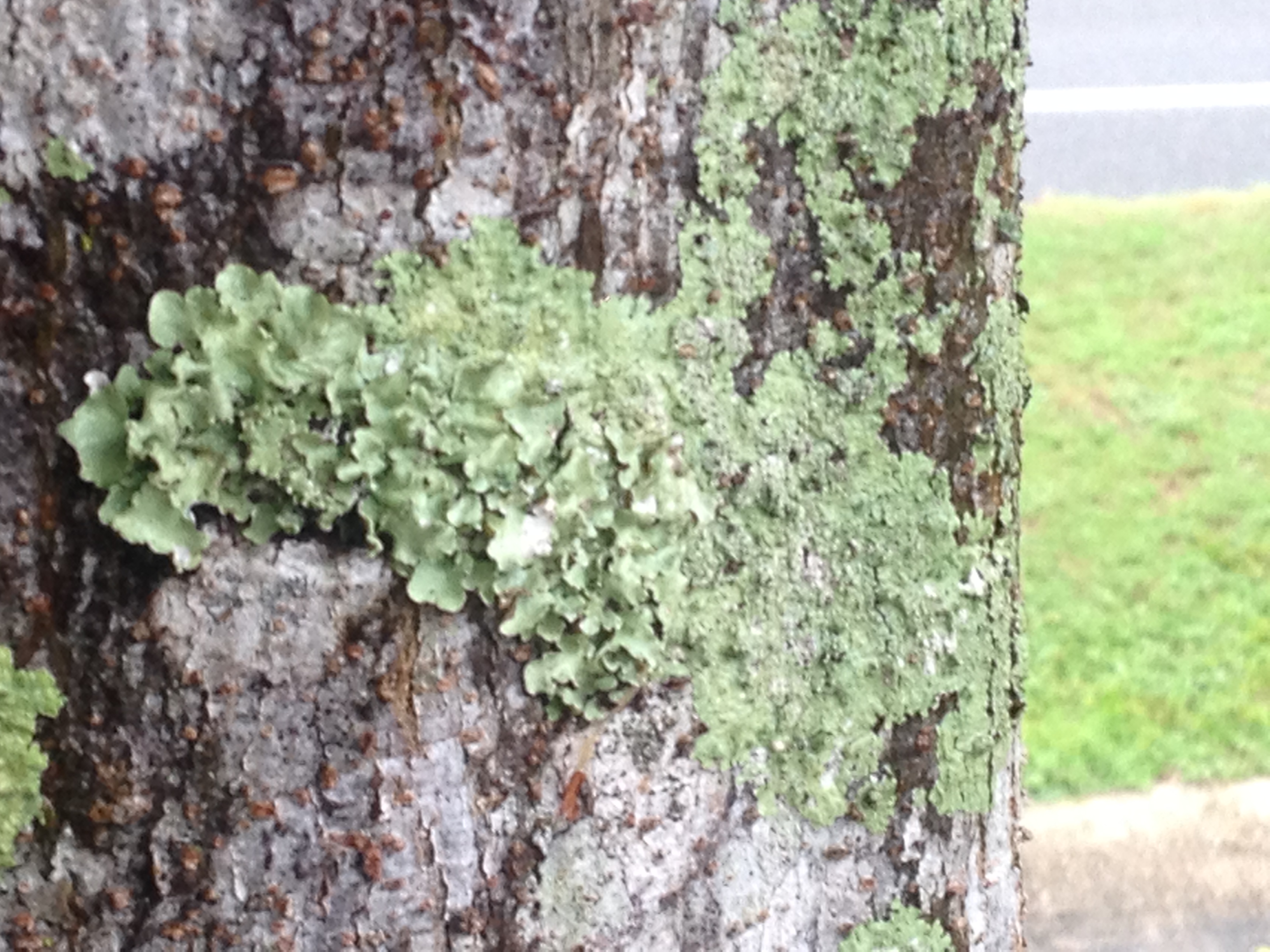
by Eddie Powell | Sep 9, 2014
Throughout the year I get calls asking about this mossy-like stuff growing on the bark of trees. For the most part, the calls are in the spring time when people have come out of winter hibernation and see their landscape plants covered with this alien figure. I am here to say that it is not an alien figure, though it may look like it is. These are lichens.
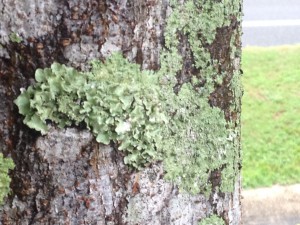
Photo Credit: Eddie Powell
Lichens often get mistaken for some unusual fungus that is killing trees. However, lichens are not single organisms, but rather a combination of two organisms that live together in a mutually beneficial way. There are over 20,000 different types of lichens found in nature. Lichens consist of a fungus and an algae; the fungus is more dependent upon its algae partner which produces enough food for both to survive. Lichens are very different from plants in that they can survive a complete body water loss. During this time, brittle pieces that flake off can later grow into new lichens. When moisture becomes available again, the lichen absorbs water and returns to its fleshy form.
The lichens growing on trees and shrubs are not parasites and do not harm the plants in any way. The lichens use the landscapes as a structure to become established.
There are four different forms of lichens found, crustose (crust-like, growing tight against the substrate), squamulose (tightly clustered and slightly flattened pebble-like units), foliose (leaf like, with flat sheets of tissue not tightly bound), and fruticose (free-standing branching tubes). Colors range from white to gray, green, red, yellow, and black. Lichens commonly found in our area are in the crustose, foliose, or fruticose form, and are white, gray, or gray-green in color.
Because lichens produce chemicals, they have very few natural predators. However, the most serious threat to lichens is air pollution. Most lichens will not grow in a polluted atmosphere and therefore you should be glad to see lichen here or there in your yard, as this is an indication that the air is relatively clean.
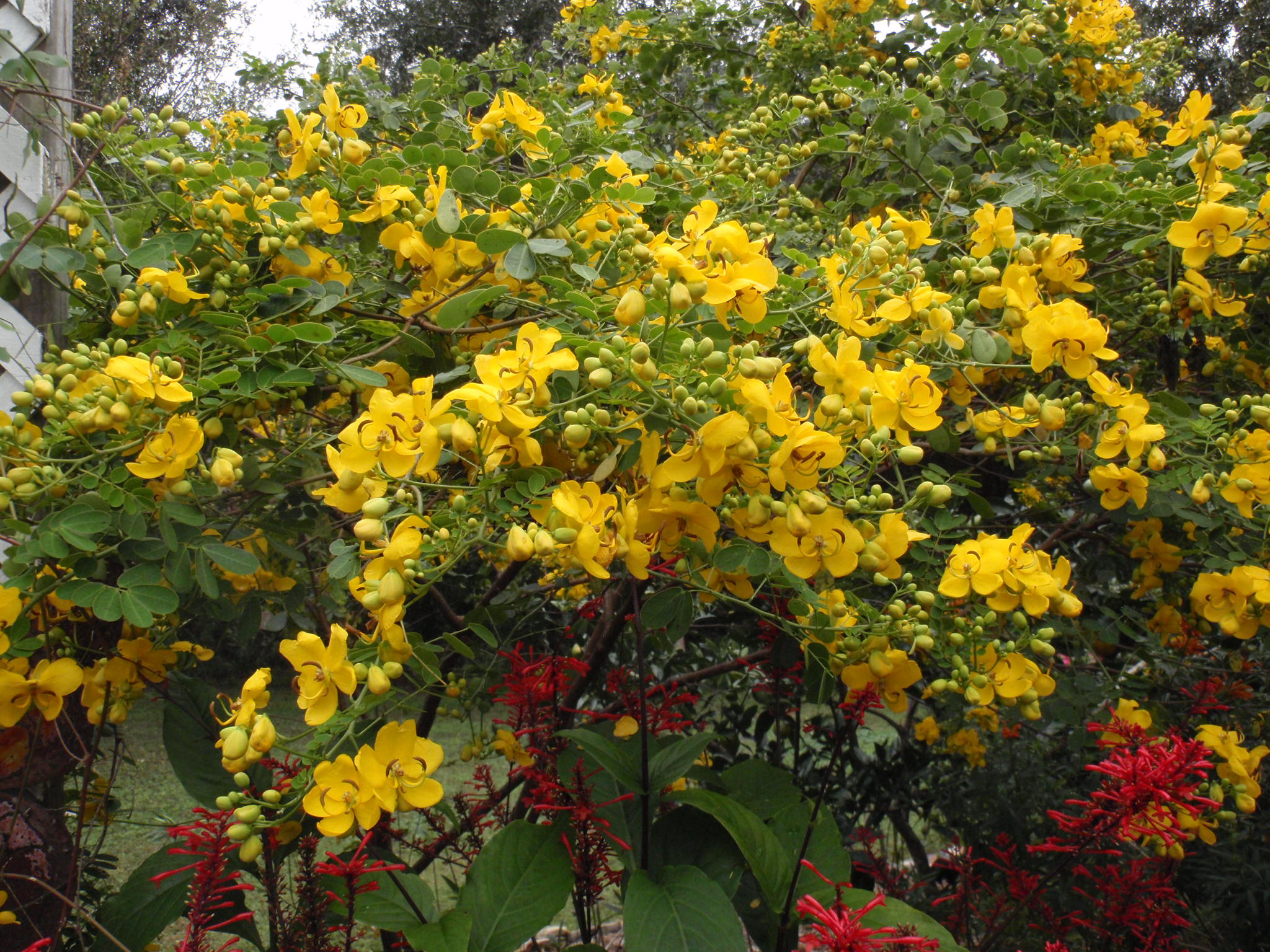
by Beth Bolles | Jan 14, 2014
Trees and shrubs often serve a distinct purpose in landscapes, other than to provide color. They are planted to provide shade, screen a view or noise, or to soften the hardscapes of the home.
With a little planning, we can have both beauty and function from trees and shrubs. Add a few trees and shrubs that have color in different seasons and your landscape will always be interesting.
The added benefit of growing trees and shrubs is that they are low maintenance. Once the plants are established in the landscape, they will require very little water and only an occasional application of a slow release fertilizer. A good layer of an organic mulch around the plants will help conserve moisture, prevent weeds, and keep root temperatures regulated during our temperature extremes. You may have to do a little pruning every year to remove any diseased, damaged, or severely crossing branches.
Here is a list of plants to give you garden interest throughout all seasons:
Winter color
- Taiwan cherry (Prunus campanulata) is an underutilized ornamental cherry for the coastal south. Clusters of dark pink flowers cover the plant which grows about 20 feet.
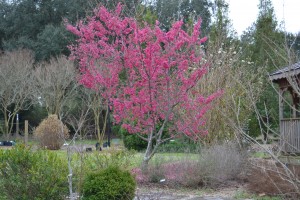
Taiwan cherry
- Camellia japonica is widely used in landscapes, but still an excellent choice for winter color. Careful selection of types will provide a garden with color from November through April.
- Red maple (Acer rubrum) will provide color in both the late winter and fall. Flowers are brilliant red in late winter and leaves begin turning red in late October.
- Other choices include Oakleaf hydrangea, Florida anise, Red buckeye, and Japanese magnolia
Spring
- Fringe tree (Chionanthus virginicus) can be in shrub or tree form and range in height from 10 – 20 feet. Forms white clusters of showy fringe-like flowers in late winter and early spring before the leaves emerge.
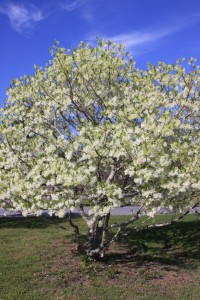
Fringe tree
- Chinese fringe (Lorepetalum chinesis ‘Rubrum’) is a very popular shrub. Pink blooms are heaviest in the spring. The plants can get up to 12 feet in height so plant it were it will not obstruct a view.
- Virginia sweetspire (Itea virginica) forms clusters of white flowers. Plants offer purplish foliage in the fall.
- Other choices include Banana shrub, native azaleas, Indian hawthorn, and Deutizia,
Summer
- Chaste tree (Vitex agnus castus) is a large shrub with fragrant leaves and spikes of purple flowers. Tolerates drought and develops interesting shape.
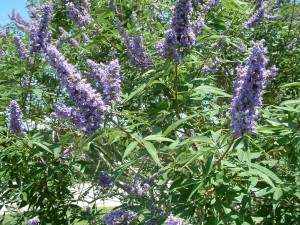
Chaste tree
- Loblolly bay (Gordonia lasianthus) is an evergreen tree that grows to 25-35 ft in height. Large white flowers with yellow stamens resemble camellia blooms.
- Abelia spp has white flowers that appear over the entire plant. It is attractive to butterflies .
- Other choices include Crape myrtle, Althea, Confederate rose, and Oleander
Fall
- Bald cypress (Taxodium distichum) will become a large tree over time. In the fall the feathery leaves will turn orange-brown. Good tree for both wet and dry areas.
- Beautyberry (Callicarpa americana) a native that forms clusters of purple berries that line the stem. Leaves turn yellow and provide fall interest as well.
- Cassia bicapsularis can reach 8-12 ft in height and will have bright yellow flowers that form in October and persist until a freeze.

Cassia
by Mary Salinas | Sep 23, 2013
Is the newest growth on your sago palm turning yellow, brown, frizzy looking and dying – is it a pest or disease or something else?
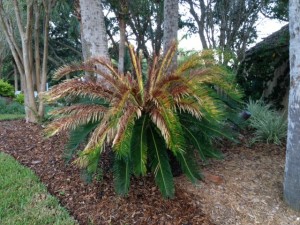
Photo credit: Mary Derrick
This sago palm is suffering from a classic case of manganese deficiency. When sago palms lack manganese, the newest leaves will develop yellow splotches or be entirely yellow. As the leaves die, they turn brown and take on a frizzled appearance. Sometimes the leaves or fruit may be smaller than normal. If left unchecked, the sago usually dies.
Manganese is a micronutrient required by all plants for normal, healthy growth and is most available for plant uptake when the soil pH is between 5.5 and 6.5. Soils in the Florida panhandle are often naturally low in manganese and then what available manganese is present can be unavailable for the plant to use if the pH of the soil is much above 6.5. Also, manganese tends to be leached from the soil when the pH is below 5.5. Soil pH and nutrient testing is useful to determine if soils are nutrient deficient. Contact your county Extension office for information on getting that done.
[notice]Before treating, rule out an infestation of Asian cycad scale. Click here for a UF IFAS Extension publication on this damaging insect. Be aware that both are common problems for sago palms and that your sago may be afflicted with both![/notice]
If this is happening to a sago palm, the good news is that it is easy to correct. Manganese sulfate is readily available at garden centers, feed &seed stores and independent nurseries. Just make sure to get manganese sulfate and don’t confuse it with magnesium sulfate (Epson salts). The amount of manganese sulfate necessary to correct this deficiency will vary with its size, soil type and pH. Sago palms in sandy, acidic soils require less manganese sulfate than those in high pH soils. One ounce is sufficient for a very small plant in sandy, acidic soil. A very large sago in a high pH soil may require about five pounds, however. Spread the product evenly over the root zone and water in with about a half inch of water.
The affected leaves cannot be cured but new growth should return to normal. If the new growth is still affected, an additional application of manganese sulfate may be needed. Once sago palms have suffered from a manganese deficiency, half the initial rate should be applied yearly to prevent the deficiency from re-occurring.
Even though sago palms are not true palms – they are cycads – their nutritional needs are very similar to palms. Most of the time they grow well without any supplemental fertilization, but if they do need fertilizing, use a 8-2-12-4 (the fourth number is magnesium) palm fertilizer with micronutrients and avoid using other fertilizer products in their root zones.
For more information on sago palms please see:
Cycas revoluta, Sago Palm








